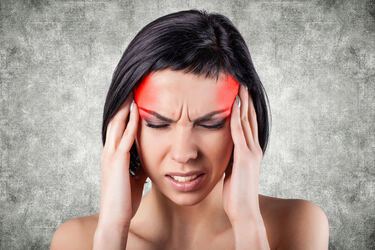Headache and migraine: what are the signs

Some causes of headaches:
- Muscle tension
- Poor posture: Poor posture, especially when sitting for long periods of time, can cause tightness in the neck and shoulder muscles, which can lead to headaches.
- Stress and anxiety.
In this case, too, it can be prevented by massage, Pilates, stretching, and medication. Working on the staircase muscles of the neck, the muscles near the shoulder blades (we take the spectrum of the cervical-collar zone), trigger points at the transition between the head and neck, and the masticatory muscles will already help reduce headaches.
A migraine is more than just a "severe headache," it is a neurological condition that is broader than intense, debilitating headaches.
A day or two before a migraine, you may feel:
⁃ irritability
⁃ fatigue
⁃ increased appetite
⁃ pain and discomfort in the neck
⁃ sensitivity to sounds and frequent yawning
"Migraine pain most often affects the forehead. It is usually on one side of the head, but it can occur on both sides or shift. The pain is most often described as pulsating, crushing, perforating, pounding, debilitating, but it can also be just a dull, constant, severe pain. Most migraine attacks last about 4 hours. If they are untreated or do not respond to treatment, they can last from 72 hours to a week.
Causes of migraine:
- Vascular (intracranial vasoconstriction and vasodilation of blood vessels) are often associated with the serotonin system.
- Activation of mast cells, mastocytes, and neuroinflammation – see a doctor for diagnosis.
- Neural events (hyperexcitability and depression of cortical distribution).
- Nociceptive causes (the most common type of pain, it is associated with irritation of pain receptors. Such pain occurs in case of injuries, inflammation, tissue damage).
- The release of histamine, tryptase and other inflammatory cytokines – this is where food comes in.

